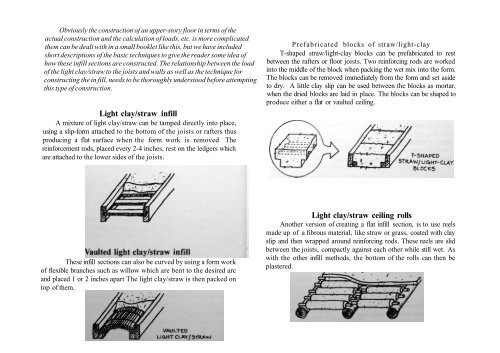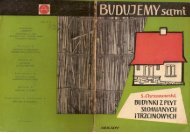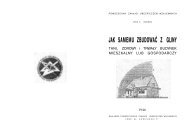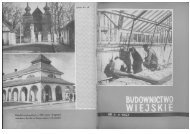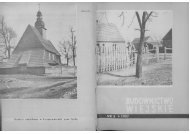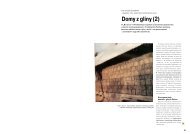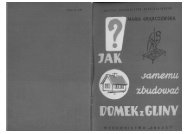by Athena and Bill Steen - Cohabitat
by Athena and Bill Steen - Cohabitat
by Athena and Bill Steen - Cohabitat
You also want an ePaper? Increase the reach of your titles
YUMPU automatically turns print PDFs into web optimized ePapers that Google loves.
Obviously the construction of an upper-story floor in terms of the<br />
actual construction <strong>and</strong> the calculation of loads, etc. is more complicated<br />
them can be dealt with in a small booklet like this, but we have included<br />
short descriptions of the basic techniques to give the reader some idea of<br />
how these infill sections are constructed. The relationship between the load<br />
of the light clay/straw to the joists <strong>and</strong> walls as well as the technique for<br />
constructing the in fill, needs to be thoroughly understood before attempting<br />
this type of construction.<br />
Light clay/straw infill<br />
A mixture of light clay/straw can be tamped directly into place,<br />
using a slip-form attached to the bottom of the joists or rafters thus<br />
producing a flat surface when the form work is removed The<br />
reinforcement rods, placed every 2-4 inches, rest on the ledgers which<br />
are attached to the lower sides of the joists.<br />
These infill sections can also be curved <strong>by</strong> using a form work<br />
of flexible branches such as willow which are bent to the desired arc<br />
<strong>and</strong> placed 1 or 2 inches apart The light clay/straw is then packed on<br />
top of them.<br />
Prefabricated blocks of straw/light-clay<br />
T-shaped straw/light-clay blocks can be prefabricated to rest<br />
between the rafters or floor joists. Two reinforcing rods are worked<br />
into the middle of the block when packing the wet mix into the form.<br />
The blocks can be removed immediately from the form <strong>and</strong> set aside<br />
to dry. A little clay slip can be used between the blocks as mortar,<br />
when the dried blocks are laid in place. The blocks can be shaped to<br />
produce either a flat or vaulted ceiling.<br />
Light clay/straw ceiling rolls<br />
Another version of creating a flat infill section, is to use reels<br />
made up of a fibrous material, like straw or grass, coated with clay<br />
slip <strong>and</strong> then wrapped around reinforcing rods. These reels are slid<br />
between the joists, compactly against each other while still wet. As<br />
with the other infill methods, the bottom of the rolls can then be<br />
plastered.


